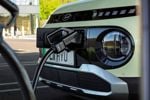The introduction of new emissions testing has disrupted car choice lists and CO2 caps whether fleets run a total cost of ownership (TCO) or lease rate model for assessing relative vehicle costs.
But the awareness of NEDC correlated or WLTP (Worldwide harmonised Light vehicle Testing Procedure) among drivers is mixed.
There is no mass migration to take the cash alternative, but a slight increase, fleet managers say. Most drivers aren’t aware of the benefit-in-kind implications and instead the burden falls on fleet decision-makers to revamp grades, bandings and CO2 caps to keep pace.
Here are comments from some of them at the November Fleet200 Executive Club meeting.
- “I’ve moved into a TCO vehicle lists from monthly lease rate which took three months to build working with the OEMs and nine months to get authorised, working with HR on what drivers could have and the grades – and a lot of politics. Six months discussions, and a three-month launch period. It’s been dashed to pieces by WLTP, so I will have to start them again.”
- “WLTP has helped. We based our TCO benchmark on a four years/80,000 mile operating cycle and included every single cost you could potentially have, including lease costs, fuel, national insurance, RVs. And it showed massive savings on lease rate - £4.3 million over two-and-a-half years. WLTP then meant a lot of recalculations, which alone has saved £470,000 this year.”
- “In compiling the vehicle choice list I knocked 15% off OEM combined mpg figures as they weren’t to be trusted. And if there was a PHEV on the list with a stated figure of 130mpg, I knocked it down to 70mpg for drivers that don’t re-charge the battery. WLTP has only reinforced my assumptions.”
- “TCO is different for every fleet depending on the components they want to include. Typically beginning with leasing rates, plus fuel, national insurance and sometimes insurance although this is a constant. The real purpose of TCO is to establish a relative value of one vehicle measured against another. The two components that will be impacted by WLTP – and already have been by NEDC correlated values – are fuel cost, as mpg values drop, and benefit-in-kind as CO2 values rise. Some cars will fall out of their band, some will fall out of businesses’ CO2 caps.”
- “Most of my vehicles have fallen out of their bands as a result of WLTP.”
- “There will be a point where a important decision has to be made. From January we’ll start to see WLTP values, alongside NEDC correlated figures. Cars will have two mpg and CO2 values. But the WLTP values won’t be relevant for tax reasons until April 2020. So at what point do you abandon the NEDC correlated value and pick up WLTP to calculate the fuel cost and CO2 for the NI cost? It would be sensible to switch both at the same time. So it would probably be sensible to switch at this time of year as you order cars that will be affected by WLTP-based benefit-in-kind. Otherwise you’ll have to manage two changes, NEDC and WLTP.”
- “I know any recent change in grading has been a temporary measure. Do it now, change it in six months’ time. To appease drivers we need to make drivers aware of changes, not leave them in a holding pattern. On average they will be paying £40 a month extra for the same car. And there’s even a question mark over whether they will be able to have the same one, depending on the impact on banding and CO2 cap.”
- “It’s important how you make changes clear to drivers. A lot of them ordering over this ‘temporary’, NEDC correlated period, don’t realise the impact on their BIK, particularly the younger ones getting their first company car. Line managers can play a key part, so get their buy-in.”
- “My sense is that while we’re tuned into BIK, drivers don’t see it, they care less. Anyone ordering their car today doesn’t give two hoots what their tax will be in 2021 onwards. It’s not the concern you think it is.”
- “A friend has a new car and saw the drop in her pay and only then said ‘what is this?’ In certain organisations the tax implications aren’t visible enough – and that includes the increases from year one, where it might be bearable, but two and three when it’s painful.”
- “Our TCO model is based on rental, fuel and NI contributions, supplemented by CO2 caps at different gradings. But because we had so many gradings we had to do lot of manipulations because of drivers’ expectations of what car they could have. We haven’t changed our gradings for some time so the recent WLPT/NEDC changes haven’t changed much. The expectations and the resulting shuffling between the grades still happens. But an internal change, linking company cars to employee rewards will be tied to emission regulation changes to tighten the rules around car choice.”
- “NEDC correlated has meant changing grade structure completely. Car that were in the lowest CO2 band disappear completely as a result of new testing. Then with WLTP we’ll change them again as CO2 emissions will be another 20% higher.”
- “We’ve seen a shift towards taking cash, rather than the car, because the Audi, for example they wanted is no longer on the list as a result of higher CO2 figures.”
- “There’s no doubt the company car has become less attractive because benefit-in-kind has gone up, whether it’s down to NEDC correlated or WLTP and it’s gone up much faster than OEMs can reduce emissions. It was the other way round. Cash will become relatively more attractive.”




















Login to comment
Comments
No comments have been made yet.